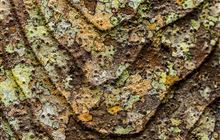Manuka beettle on Maud Island
Image:
Sabine Bernert
| ©
Te Mana o te Taiao – Aotearoa New Zealand Biodiversity Strategy 2020
Introduction
Te Mana o te Taiao – Aotearoa New Zealand Biodiversity Strategy (ANZBS) will guide the way New Zealand protects and restores nature.The ANZBS is our national strategy for addressing the biodiversity crisis in New Zealand.
DOC leads its implementation and drives much of the work contributing to it, but the strategy belongs to all New Zealanders.
From central and local government, Māori, NGOs and businesses, to communities, conservation groups and individuals, everyone has a role to play in protecting and restoring our precious biodiversity.
Learn more about why we need the strategy and how we’re implementing it.

